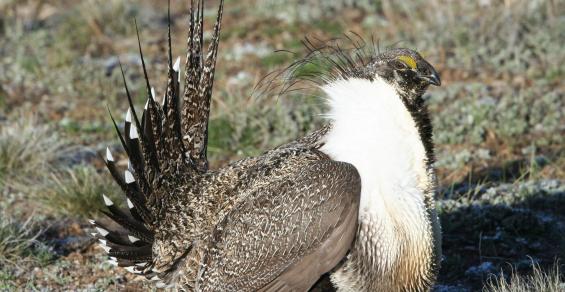Last week, the Department of the Interior, with former U.S. Representative from Montana Ryan Zinke at the head, announced it will open a public comment period and assess options for amending the 2015 plan amendments for conserving the greater sage grouse in 11 Western states.
While this is an issue that affects western ranchers, the final outcome will be important to the entire beef business because it will signal how well the federal government will juggle the strident and conflicting voices that weigh in on these types of issues. And, as you might expect, the various groups with an interest in the sage grouse plan had differing reactions to the announcement.
According to the Public Lands Council, a part of NCBA, the notice of intent comes on the heels of interior’s review of the sage grouse plans earlier this year. During the process, the sage grouse review team consulted with various stakeholders, including ranchers, to examine the best method of protecting sage grouse populations and identified areas where the 2015 plan amendments fall short.
“Ranchers have spent decades working to sustain and enhance habitat that is optimal for sage grouse by responsibly grazing public lands,” says Dave Eliason, president of the Public Lands Council. “Grazing and habitat conservation are two concepts that are not mutually exclusive and this partnership is a solution benefiting all.”
According to Ethan Lane, executive director of the Public Lands Council, “We know the ranching community, specifically public lands ranchers, have unique challenges and opportunities. This one-size-fits-all approach restricted our ability to play our part in this conservation effort.”
READ: Sage grouse, cattle thrive in a rest-rotation program
However, environmental groups take a different tack. In a recent blog, Eric Holst, vice president of working lands for the Environmental Defense Fund, defended the current plan. One of his points is that agriculture and energy “would lose clear and consistent standards that they rely on to operate and to confidently plan for the future.”
However, since both ranching and energy groups welcome the possibility of revising the plan, it’s clear that both of those very important economic drivers of the economy in the West think it can be improved.
Holst also observes that the greater sage grouse is a canary in a coal mine. “It’s a sign of a declining sagebrush ecosystem. It’s also a sign of a greater political fight ramping up on the mitigation front.”
Zinke and the Trump administration are accused of opening up federal lands with an energy first agenda. I don’t know enough about oil and gas development to know if more exploration and production will disturb sage grouse populations, or other wildlife for that matter. But I do believe that if the U.S. intends to become more energy independent, it won’t happen with renewable energy alone.
Agriculture and energy groups were at the table when the 2015 plan was developed. But any plan, even if it’s good, can be improved. If the plan amendments can be improved in a thoughtful way, where those with boots on the ground in the West can benefit while continuing to be a part of conservation efforts, then we all win.




Leave A Comment